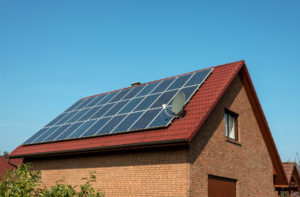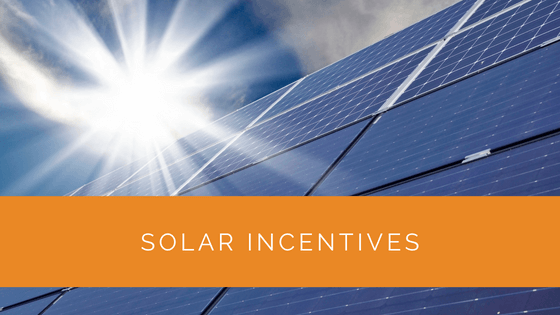With more and more incentives coming in, going solar is getting more viable for US citizens. However, it still requires a heavy upfront investment. On average, a solar power system costs around $16,000-$20,000.
Fortunately, the state and federal governments offer numerous incentives to help you cover your investment and earn a significant profit. This is why the number of Americans using a solar system is expected to more than triple by 2030.
What are these incentives? How can you claim them, and will Biden give more such subsidies in the future? Please read the entire article to find our answers to these questions.
Contents
- 1 Key Takeaways
- 2 Federal Solar Tax Credit
- 3 How to Claim The Federal Solar Tax Credit
- 4 Renewable Energy Certificates
- 5 Solar Incentives Offered by States
- 6 Other Great Solar Incentives To Lookout For
- 7 Benefits of Using Solar Energy System
- 8 Frequently Asked Questions on Solar Incentives
- 9 Case Study: Maximizing Solar Incentives for a Residential Installation
- 10 Expert Insights From Our Solar Panel Installers About Solar Incentives
- 11 Experience Solar Excellence with Us!
- 12 Summing It Up
Key Takeaways
- The federal government offers a 30% tax credit on the cost of a solar power system, helping homeowners save significantly on their investment. The system must be in service and produce electricity throughout the year to be eligible. This credit is claimed on your annual tax return.
- Various states offer additional incentives such as tax credits, rebates, and net metering to promote the use of solar energy. These incentives can vary greatly from state to state and can further reduce the overall cost of installing solar panels.
- Investing in a solar PV system can lead to cheaper energy bills, immediate savings, and increased property value. It also helps in reducing your environmental impact by using renewable energy sources.
Federal Solar Tax Credit
Probably the most well-known and the most lucrative solar incentive, federal solar text credit is available to everyone who has a solar system. According to this scheme, the Investment Tax Credit (ITC) will give a 30% tax credit on the solar-powered system’s investment cost. However, you must ensure that your taxable income exceeds the credit offered to avail of this benefit.
This usually means a 30% tax refund on your solar system cost. If you spent around 30,000 on your solar system, the ITC would provide you with $7,800 in tax credits.
How Does the Federal Solar Tax Credit Work?
As explained in the example above, if your solar cost comes up to $30,000, a 30% tax credit would save you around $9,000 on your federal returns. This credit is automatically deducted from the annual tax that you pay. However, the discount keeps rolling over to the next year if the tax you know is less than the credit.
Any US homeowner can claim this federal solar tax credit, provided the solar system is installed in an American residential location. There is no compulsion to install the system at your primary or secondary residence.
The system must be in service and produce electricity annually to be eligible for the benefit. If you install solar panels for your home energy this year, you’ll receive a tax credit for this year’s filings.

What Does The Solar Investment Tax Credit Cover?
Homeowners who install a solar PV system can get a 30% federal solar tax credit between the years 2022 and 2032 for the following expenses:
- The total cost of the solar panels
- Cost of additional equipment like wiring, investors, and mounting hardware.
- Energy storage devices, including solar batteries, run exclusively on solar power.
- Taxes paid for the installation of the solar system.
Eligibility For the Federal Solar Tax Credit
Here are the specific points that you must meet to be eligible for the federal solar tax credit while filing your returns.
- Your solar PV system was installed between January 1, 2017, and December 31, 2034.
- You must be the direct owner of the solar PV system. It doesn’t matter if you paid upfront or are financing the cost.
- The solar system must have been used for the first time. It means that you can only claim credit for the original installation. So, if you move places, take your solar panels, and install them at your new residence, you won’t be eligible for another benefit.
How to Claim The Federal Solar Tax Credit
The solar tax credit is claimed as a part of the federal solar tax credit. If you get your solar PV system installed by a certified company, it will provide you with all the necessary documentation and steps to avail of the benefit. Here is a general overview of claiming the federal solar tax credit.
- Download the IRS 5695 form straight from their website.
- Enter the entire project’s cost on line 1 and then complete the calculation of lines 6a and b.
- If solar is your renewable energy addition, you can skip to line 13 and ignore the rollover credit clause.
- Account for any tax liability limitation. You can do this by using the residential energy property credit limit worksheet.
- Complete the calculations on clauses 15 and 16.
- Copy the figure from line 15 to schedule 3, line 5.
Please remember that the tax credit is only applicable on your annual return. If your final taxable income tax is less than the credit amount, the credit is rolled over to the following year.
Can You Claim The Federal Solar Tax Credit Twice?
You can only claim the solar tax credit once for a singular installment. If you plan on using your existing installment in the different residential areas, you won’t get any extra credit.
Renewable Energy Certificates
RECs are a type of financial incentive that allows citizens to pay for renewable energy production without obtaining energy from renewable energy sources. These are used with electric utilities to follow the state’s renewable energy portfolio standards. Other products, such as green certificates, can also be used to purchase renewable energy production in areas where the authorities do not provide a green power purchase agreement.

Solar Incentives Offered by States
Other than the federal tax credits, different states offer benefits in various capacities to boost the use of solar energy. California, Texas, Minnesota, and New York provide the maximum solar panel tax credit.
The terms and conditions of such benefits vary vastly from state to state. Therefore, it would be best to consult the Database of State Incentives for Renewables and Efficiency for clarity.
Here are some of the most common state tax credits available in different parts of the country.
Tax Credits
State tax credits in the solar industry work the same as the federal tax credits, but they consider different remunerations. These incentives don’t affect your federal tax credit. The exact amount varies from state to state.
Rebates
Several state governments offer rebates for the installation of solar panels. One downside of these incentives is that they are usually available only for a limited time until the state has spare funds.
Therefore, you should do thorough research regarding your state’s rebates to ensure you don’t miss out on them. These incentives can reduce your overall solar cost from 10% to 20%.
Net Metering
Net metering is a performance-based incentive given as a dollar-for-dollar reduction concerning every kWh of energy generated. Solar companies control these metrics, and the per-unit remuneration differs from state to state.
Other Great Solar Incentives To Lookout For
Other than the discussed state and federal tax credits, a few other local incentives can help you make up for your solar investments.
Domestic Utility Company Rebates
Local authorities often provide incentives to homeowners to install solar panels. Some of these rebates are offered based on the Energy Policy Act. This means that the benefit amount keeps increasing according to the solar energy produced by the system. Some utilities even provide one-time subsidies to encourage solar energy production.
Low-interest Loans
States, local authorities, and even professional financial guidance companies offer low-interest solar PV system investment loans. Discussing the prospect of subsidized loans with your installer is best since they are likely to know the most viable financing scheme.
Tax Exemptions
Other than tax credits on federal income tax and state tax credits, you might also be eligible for additional tax exemption to cover the system cost. Some authorities don’t even include the cost of your solar PV system’s installment in assessing property taxes, even when it raises the price of your house. This means that your property bill will not increase with the solar investment.
Moreover, some states even offer tax exemptions on all solar equipment. This can save you thousands of dollars when you draft your system’s installation cost.
Benefits of Using Solar Energy System
We looked at the different financial incentives the state and federal governments offer to encourage people to go solar. But how will it help you as a consumer in other ways?
Here are some benefits you can avail of from investing in a solar PV system for your home.
Cheaper Energy Bills
Whether you reduce your energy bills, eliminate them, or even earn a profit from them depends on the area you live in and the amount of electricity produced by your solar panels. If you live in a sunny area, you’ll probably get sunlight for 5-6 hours daily. This will produce ample solar energy and make your energy bills negligible.
Take home Tax Credits and Incentives.
The federal tax credit of 30% on your federal income taxes and other state tax credits can help you significantly reduce your solar investment. If you live in a state like Washington, you can save over $900 monthly on federal and state income taxes by seeking professional tax advice.
Immediately Start Saving
There is no waiting period when it comes to solar savings. Most incentives, including the 26 federal tax credits and other state benefits, start from the day your system produces electricity.
Statistics show that solar installation can increase the value of your home by 6,000 per installed KWh. For example, a 3KWH solar PV system can add up to $18,000 to your property’s value.

Frequently Asked Questions on Solar Incentives
What is the value of the solar tax credit?
The federal tax credit is valued at 30% of the total installation cost between 2022 and 2032 from the federal income taxes. While those installed in 2033 and 2034 receive 26% and 22%, respectively. The tax credit expires starting in 2035 unless Congress renews it.
Can you claim the solar tax credit if you’re not the house owner?
This is possible only under exceptional circumstances. It would be best if you either were a tenant-stockholder at a cooperative housing corporation or a member of the condominium complex to claim the non-refundable tax credit.
Can you claim the credit if you’re not connected to the grid?
All you need to claim the solar incentive is a solar PV system that generates electricity. You don’t need to be connected to any electric grid.
Case Study: Maximizing Solar Incentives for a Residential Installation
Background
At Solar Panels Network USA, we focus on delivering customized solar solutions that maximize both environmental and financial benefits. Recently, we worked with a homeowner in Asheville, North Carolina, who wanted to leverage available solar incentives to minimize the costs associated with installing a solar power system.
Project Overview
The homeowner was keen to reduce their carbon footprint and benefit from the financial incentives offered by both the federal and state governments. They needed a comprehensive solution that optimized their investment while ensuring maximum energy efficiency.
Implementation
To achieve these goals, we implemented a detailed strategy:
- Federal Solar Tax Credit: We ensured the homeowner could claim the 30% federal solar tax credit, which significantly reduced the overall cost of the solar power system.
- State Incentives: We identified and applied for various North Carolina state incentives, including tax credits and rebates, which further lowered the installation expenses.
- Net Metering: We set up a net metering arrangement with the local utility company. This allowed the homeowner to earn credits for excess energy produced, offsetting their electricity bills.
- Smart Financing Options: We assisted the homeowner in securing a low-interest loan specifically designed for solar installations, making the investment more manageable.
Results
The results of this project were outstanding:
- Cost Reduction: By utilizing both federal and state incentives, the homeowner saved approximately 40% on the initial installation costs.
- Energy Savings: The net metering arrangement led to significant reductions in monthly electricity bills, enhancing the financial benefits of the solar power system.
- Increased Property Value: The installation of solar panels increased the property value, making it a more attractive asset in the real estate market.
- Environmental Impact: The homeowner was able to reduce their carbon footprint substantially, contributing to a more sustainable environment.
Summary
Our project in Asheville, North Carolina, exemplifies the significant advantages of leveraging solar incentives. By strategically combining federal and state benefits, net metering, and smart financing options, we provided a comprehensive solution that maximized financial savings and energy efficiency for the homeowner. At Solar Panels Network USA, we remain dedicated to delivering tailored solar solutions that help our clients achieve their environmental and financial goals.
Expert Insights From Our Solar Panel Installers About Solar Incentives
Solar incentives are a game-changer for homeowners looking to invest in renewable energy. The combination of federal tax credits and state rebates significantly reduces the upfront costs, making solar power accessible to more people.
Senior Solar Installer
Understanding and utilizing solar incentives can provide substantial financial benefits. From net metering to tax credits, these incentives can help homeowners achieve quick returns on their solar investments.
Lead Solar Technician
The federal solar tax credit is an excellent example of government support for renewable energy. It not only lowers the installation cost but also encourages more homeowners to switch to sustainable energy sources.
Solar Energy Consultant
Experience Solar Excellence with Us!
Trust in Solar Panels Network USA, where our seasoned experts deliver top-quality solar solutions for homes and businesses nationwide. With a legacy of countless successful installations and a commitment to sustainable energy, we’re your reliable partner in the solar journey. Ready for a brighter, eco-friendly future? Call us now at (855) 427-0058 and harness the sun’s power!
Summing It Up
Due to all such incentives, the USA is moving toward making renewable energy its primary source of domestic production at a swift rate. A well-curated combination of all such benefits can help you save money on your solar system installation.
These subsidies and property tax exemptions take nothing away from the fact that installing a solar PV system is still a hefty investment. However, these benefits can soften the financial load and even help you profit from your investments.
Consult a professional financial advisor today and maximize your solar investments.
About the Author
Solar Panels Network USA stands at the forefront of solar energy solutions, driven by a team of seasoned solar engineers and energy consultants. With over decades of experience in delivering high-quality solar installations and maintenance, we are committed to promoting sustainable energy through customer-centric, tailored solutions. Our articles reflect this commitment, crafted collaboratively by experts to provide accurate, up-to-date insights into solar technology, ensuring our readers are well-informed and empowered in their solar energy decisions.

